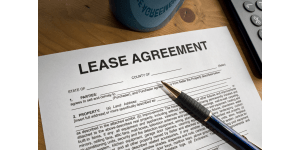Physical forms of abuse have traditionally been more readily recognised and addressed than their psychological counterparts.
However, one insidious form of psychological manipulation, known as coercive control, is steadily gaining recognition within legal circles.
As we delve into the legal battle against coercive control, we’ll explore how the law is awakening to this form of abuse, its challenges in tackling it, and the critical steps necessary to adequately address this deeply embedded form of psychological manipulation.
Table of Contents
ToggleWhat Does Coercive Control Mean?
Coercive control is a term used to describe a pattern of behaviour by which one person seeks to gain power and control over another within an intimate or family relationship.
It involves a strategic course of oppressive conduct that can include physical, sexual, psychological, and emotional abuse and often includes elements of gaslighting, stalking, and isolation.
What Are the Signs of Coercive Control in a Relationship?
Coercive control in a relationship can be challenging to recognise, especially from the inside because it can start subtly and gradually intensify over time. Also, it often doesn’t involve physical violence.
Here are some signs that may indicate coercive control:
- Isolation: The person may attempt to cut you off from your support network of family and friends. They might discourage or prevent you from spending time with them or criticise them for making you feel distant.
- Monitoring your activities: They may excessively check your whereabouts or demand to know your actions. They might read your messages or emails or insist on accessing your social media accounts.
- Control over aspects of everyday life: This could include what you wear, where you go, who you see, what you eat or drink when you sleep, and how you spend your time or money.
- Deprivation or withholding resources: They might control your access to financial resources, medical care, transportation, or communication devices to limit your independence.
- Manipulation and gaslighting: They may deny or downplay abusive behaviours, make you question your memory or perception (known as gaslighting), or make you feel guilty for things that are not your fault.
- Threats or intimidation: This could be physical harm, threats to harm themselves, threats involving children or pets, or any other threat to manipulate your behaviour.
- Control over your freedom: They might discourage or prevent you from working or studying, control your shared financial resources, or restrict your freedom in other ways.
- Humiliation and degradation: They might frequently criticise you, call you names, belittle your achievements, or mock your interests.
- Repeatedly breaking promises or agreements: This can destabilise your trust and expectations within the relationship.
- Excessive jealousy or accusations of infidelity: They may become excessively jealous or possessive or accuse you of cheating without cause.
It’s important to remember that someone who exhibits one or two of these behaviours does not necessarily exert coercive control. It’s about a pattern of behaviours designed to make the victim dependent, isolated, and scared.
Is Coercive Control a Form of Domestic Violence?
Yes, coercive control is indeed a form of domestic violence.
While the term “domestic violence” has traditionally been associated primarily with physical abuse, understanding this issue has also evolved to include non-physical forms of abuse. Coercive control is one form of abuse that can happen in a domestic setting.
Coercive control refers to a pattern of behaviour that seeks to take away the victim’s liberty or freedom and strip away their sense of self.
While it can sometimes be accompanied by physical violence, coercive control can also exist without physical violence, making it more difficult for victims and others to recognise it as a form of domestic abuse.
Is Coercive Control a Punishable Offence in Australia?
New South Wales became the first state in Australia to make coercive control a separate crime after the government passed a law recently.
People who break the new AVO NSW legislation could go to jail for up to seven years.
Also read: AVO NSW Legislation: Everything You Need to Know
What are the Advantages and Disadvantages of Criminalising Coercive Control in Australia?
The criminalisation of coercive control in Australia or any country is a complex issue with potential advantages and disadvantages. Here are a few to consider:
Advantages:
- Recognition of non-physical abuse: Criminalizing coercive control acknowledges that domestic abuse can take forms other than physical violence, providing a more comprehensive understanding of the dynamics of abusive relationships.
- Potential deterrence: If coercive control is criminalised, it may deter potential perpetrators from engaging in this behaviour.
- Increased support for victims: Criminalization could help more victims come forward, secure in the knowledge that the law recognises and validates their experiences.
- Justice for victims: Criminalizing coercive control gives victims an avenue for justice outside the civil court system, where outcomes can be uncertain.
Disadvantages:
- Difficulty gathering evidence: Coercive control often involves subtle psychological tactics, making it hard to prove in a court of law compared to physical abuse.
- Potential for misuse: There is a risk that such laws could be misused in family court proceedings, particularly in contentious custody battles.
- Enforcement and training challenges: Law enforcement and the judiciary need comprehensive training to understand the nuances of coercive control, identify it, and handle it effectively.
- Risk of escalating violence: If an abuser faces criminal charges, it could escalate the violence or controlling behaviour, especially if the abuser feels threatened or cornered.
- Lack of resources: There may be insufficient resources for supporting victims and implementing the law effectively, including safe housing, counselling services, legal aid, etc.
Are You Experiencing Coercive Control in Your Relationship?
Understanding your situation is the first step to regain your freedom. Our lawyers specialise in cases involving coercive control.
Our team of compassionate and experienced lawyers are ready to listen, offer advice, and guide you through the legal process.
Don’t suffer in silence. Reach out to us today. Together, we can navigate your journey towards safety, well-being, and justice. You’re not alone, and there’s help available. Let Justice Family Lawyers stand with you.
Principal of Justice Family Lawyers, Hayder specialises in complex parenting and property family law matters. He is based in Sydney and holds a Bachelor of Law and Bachelor of Communications from UTS.







3 thoughts on “Coercive Control: Addressing Psychological Manipulation”
Your insights into coercive control are very helpful. I can see now how much my anxiety and depression are due to the reality of the coercive control I have been subject to. The evidence is the difficult part, a it of he said, she said, although I do have some hard evidence through denial of access despite the existance of a Parenting Plan.
Thank you for sharing your insights. Very hard to establish and prove.
Pingback: How To Prove Manipulation In Court?